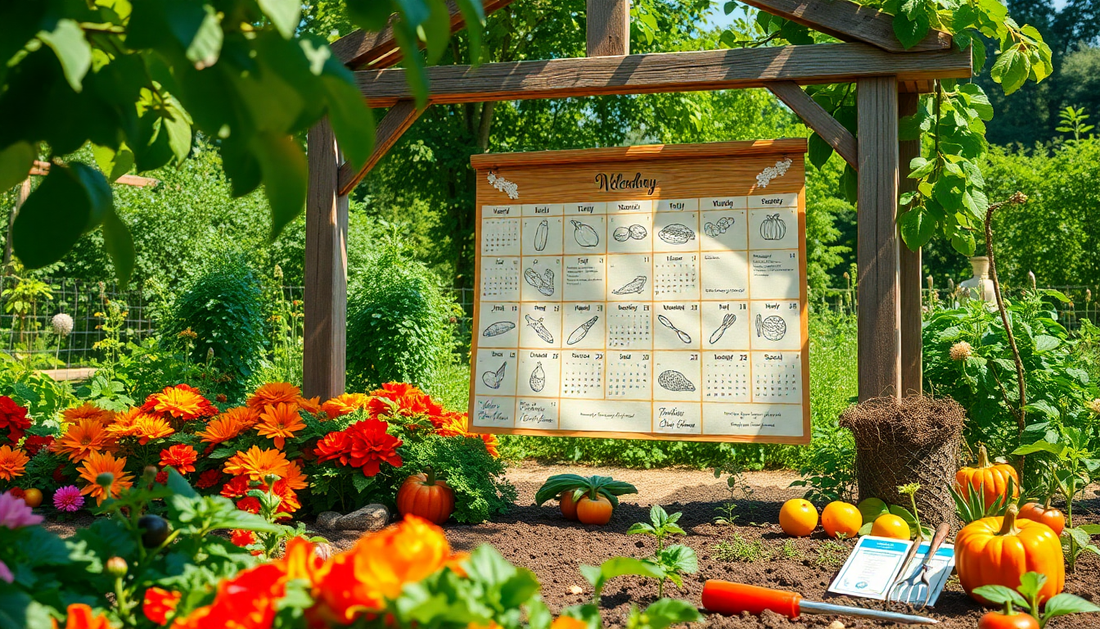
Creating a Vegetable Garden Calendar: Your Guide to Bountiful Harvests
Gardening is a rewarding hobby that can provide you with a steady supply of fresh, nutritious produce. However, to ensure a successful vegetable garden, it's essential to plan and organize your planting schedule. This is where a vegetable garden calendar comes into play. In this comprehensive guide, we'll explore the benefits of creating a personalized vegetable garden calendar and provide you with the tools and strategies to make the most of your gardening endeavors.
Understanding the Importance of a Vegetable Garden Calendar
A vegetable garden calendar is a crucial tool for any gardener, whether you're a seasoned pro or a beginner. It helps you stay organized, maximize your growing season, and ensure that your plants receive the right care at the right time. By following a well-crafted calendar, you can:
1. Optimize Planting Schedules
A vegetable garden calendar allows you to plan your planting schedule based on the specific climate and growing conditions in your area. This ensures that you sow seeds and transplant seedlings at the optimal times, minimizing the risk of crop failure and maximizing your yields.
2. Manage Crop Rotation
Rotating your crops is essential for maintaining soil health and preventing the buildup of pests and diseases. A vegetable garden calendar helps you keep track of which crops you've planted in each bed or section of your garden, making it easier to plan your crop rotation.
3. Coordinate Succession Planting
Succession planting involves sowing seeds or transplanting seedlings at regular intervals, allowing you to enjoy a continuous harvest throughout the growing season. A well-designed calendar can help you time your succession plantings for maximum productivity.
4. Anticipate and Plan for Seasonal Tasks
A vegetable garden calendar can serve as a reminder for important seasonal tasks, such as preparing the soil, applying fertilizers, and protecting plants from frost or pests. By staying on top of these tasks, you can ensure the health and vitality of your garden.
Creating Your Vegetable Garden Calendar
Designing a personalized vegetable garden calendar may seem daunting, but with a few simple steps, you can create a valuable tool that will guide you through the growing season.
1. Determine Your Growing Zone
The first step in creating your vegetable garden calendar is to determine your USDA Hardiness Zone. This information will help you identify the optimal planting dates for your region, as well as the best varieties of vegetables to grow.
2. Research Planting Dates
Once you know your growing zone, research the recommended planting dates for the vegetables you want to grow. This information can be found in seed catalogs, gardening books, or online resources. Make note of the ideal sowing and transplanting times for each crop.
3. Plan Your Crop Rotation
Decide which vegetables you want to grow and where you'll plant them in your garden. Consider rotating your crops to maintain soil health and prevent the buildup of pests and diseases.
4. Incorporate Succession Planting
Identify opportunities for succession planting, where you can sow seeds or transplant seedlings at regular intervals to extend your harvest. This will help you enjoy a continuous supply of fresh produce throughout the growing season.
5. Schedule Seasonal Tasks
In addition to planting dates, include important seasonal tasks in your vegetable garden calendar, such as:
- Soil preparation and amendment
- Fertilizer application
- Pest and disease management
- Watering and irrigation
- Harvesting and preserving
6. Customize and Personalize
Your vegetable garden calendar should be tailored to your specific needs and preferences. Feel free to add notes, reminders, or any other information that will help you stay organized and on track.
Implementing Your Vegetable Garden Calendar
Once you've created your vegetable garden calendar, it's time to put it into action. Here are some tips for effectively implementing your calendar:
1. Review and Update Regularly
Review your calendar at the beginning of each season and make any necessary adjustments based on changing weather patterns or new gardening goals.
2. Set Reminders
Use digital or physical reminders, such as calendar alerts or sticky notes, to ensure you don't miss important tasks or planting dates.
3. Maintain Detailed Records
Keep track of your garden's progress, including planting dates, germination rates, and harvest yields. This information can help you refine your calendar for future growing seasons.
4. Adapt to Changing Conditions
Be prepared to adjust your calendar as needed to accommodate unexpected weather events, pest infestations, or other challenges that may arise during the growing season.
Reaping the Rewards of a Vegetable Garden Calendar
By creating and implementing a comprehensive vegetable garden calendar, you'll enjoy a range of benefits that will make your gardening experience more rewarding and successful:
- Increased productivity and higher yields
- Reduced waste and more efficient use of resources
- Improved soil health and plant vitality
- Easier pest and disease management
- Continuous supply of fresh, nutritious produce
- Greater sense of accomplishment and satisfaction
Gardening is a journey, and a well-designed vegetable garden calendar is the map that will guide you to bountiful harvests and a deeper connection with the natural world. Start planning your garden calendar today and watch your vegetable garden thrive!







No comments